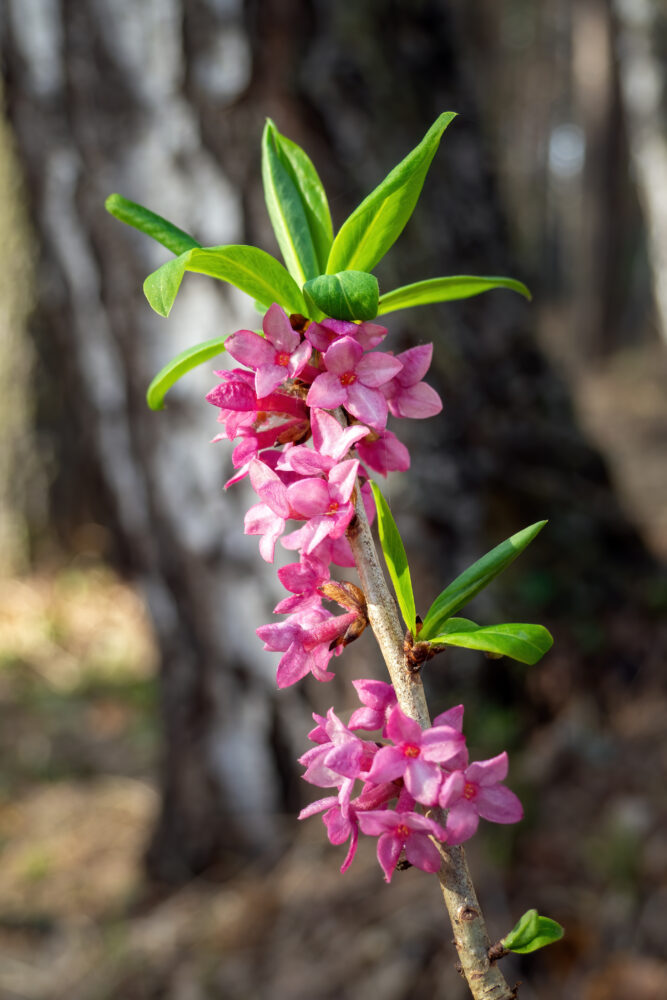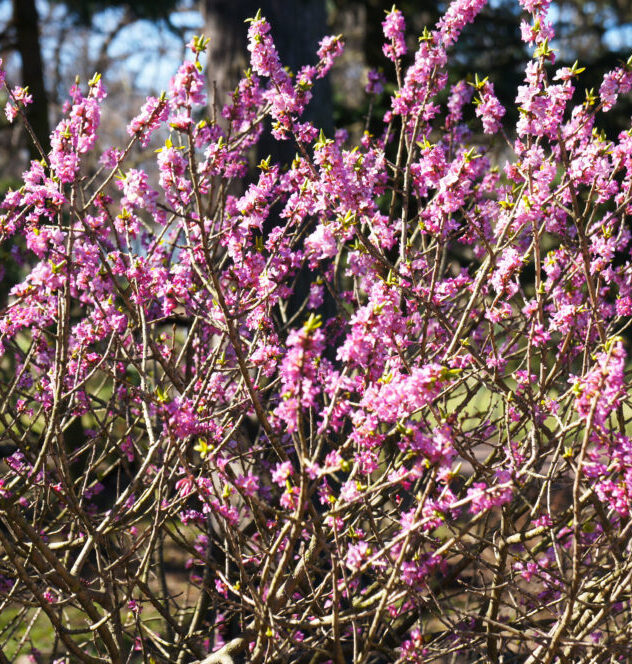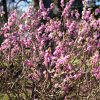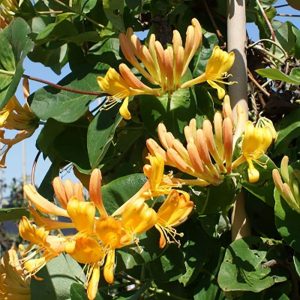Description
Daphne mezereum var. rubra is a variant of the species Daphne mezereum, also known as February daphne or mezereon. It is a deciduous shrub native to Europe and Asia. This variant is known for its pink flowers that bloom in early spring before the leaves emerge. The shrub has glossy, green leaves and bright red or orange berries. It prefers well-drained, acidic soil and partial shade. It is often used as an ornamental plant in gardens, also it is a popular choice for planting in naturalized gardens, rock gardens, and woodland gardens. It can be propagated by seed or by taking softwood cuttings in spring or semi-hardwood cuttings in late summer.
Key Facts
- Common Name(s):Red mezereon
- Hardiness:Fully hardy
- How big will I get? Daphne mezereum var. rubra can grow to a height of 1.5m and a spread of 1.5m.
- Did You Know That:Daphne mezereum var. rubra has red flowers that bloom in the early spring before the leaves appear?
Plant Calendar
A rough guide to how this plant will change through the year.
| Jan | Feb | Mar | Apr | May | June | July | Aug | Sept | Oct | Nov | Dec | |
| Flowering Time |   |
  |
||||||||||
| Foliage Colour |  |
 |
 |
 |
 |
 |
 |
 |
 |
| J | F | M | A | M | J | J | A | S | O | N | D |
  |
  |
||||||||||
 |
 |
 |
 |
 |
 |
 |
 |
 |
Care Guide

Soil Requirements
Daphne mezereum var. rubra is a versatile plant and can cope with wet or drier soils, but prefers there to be decent drainage. This plant can grow in soil with a wide range of pH levels, it is not picky about the pH level of the soil.

Best Position
Daphne mezereum var. rubra prefers a sheltered position and can cope with either full sun or partial shade.

Maintenance
Daphne mezereum var. rubra should be pruned in early spring before new growth appears. Start by removing any dead, diseased, or damaged wood by cutting it back to healthy wood. This helps to promote healthy growth and prevent the spread of disease. Next, prune out any old or woody stems that may be crowding the center of the shrub, as this will encourage new growth and a more compact shape. Additionally, it is important to consider the size and shape of the shrub when pruning and to selectively remove branches to maintain the desired shape. It’s also good to prune back any branches that have bloomed to encourage new blooms to form.

Pest, Diseases and Wildlife
Daphne mezereum var. rubra can have problems with aphids, it can be vulnerable to certain diseases such as leaf spot and grey moulds. It is also known to attract bees. It is toxic to cats, dogs, horses and people.







